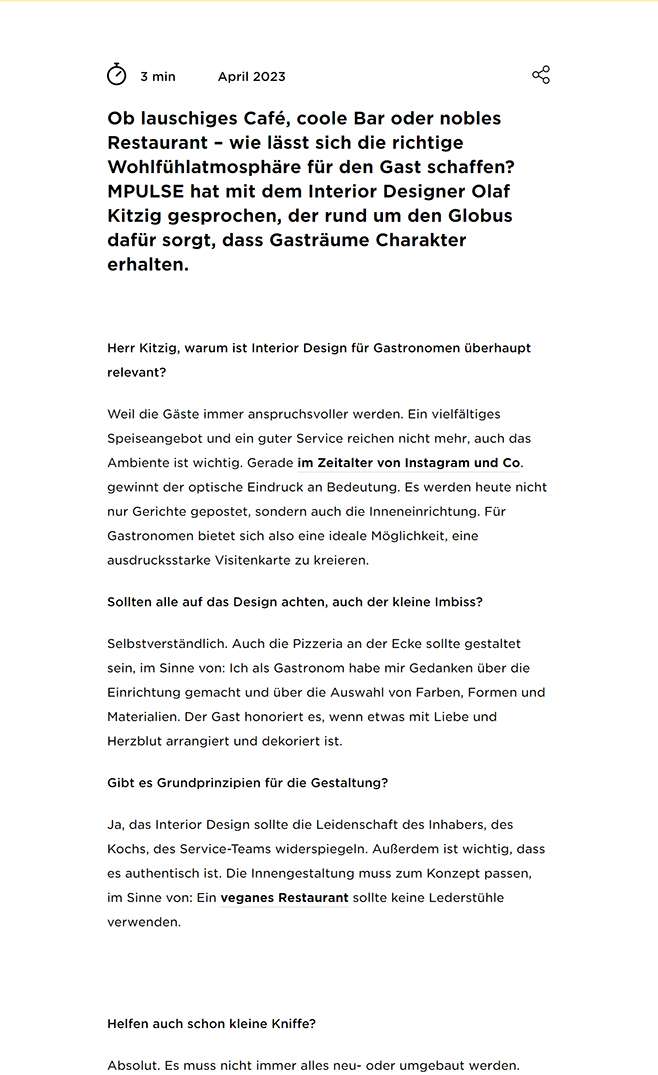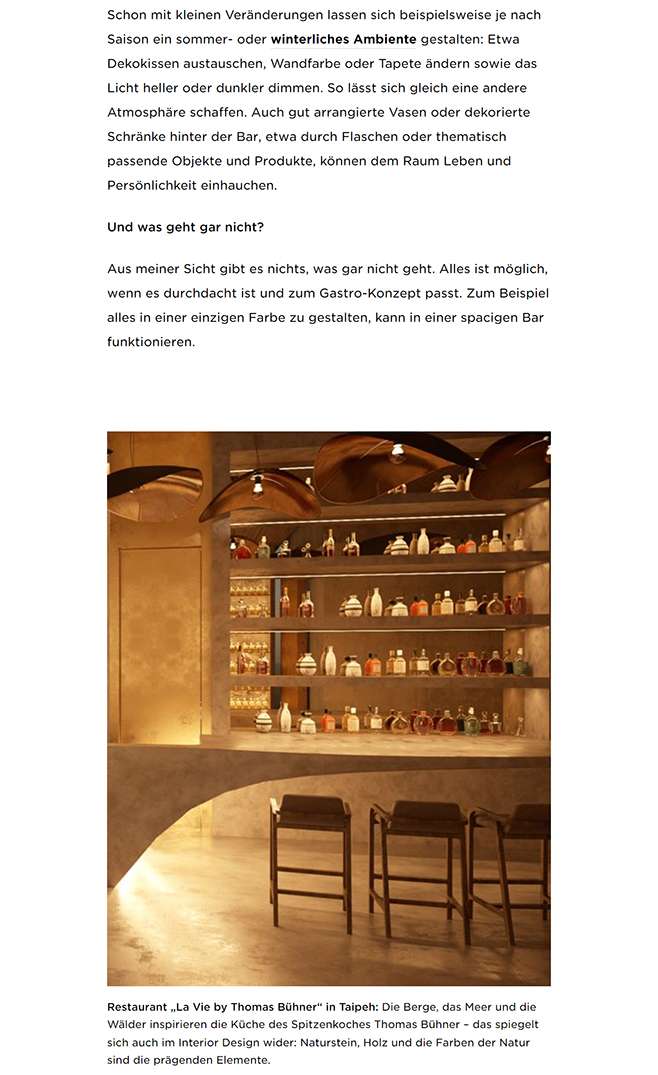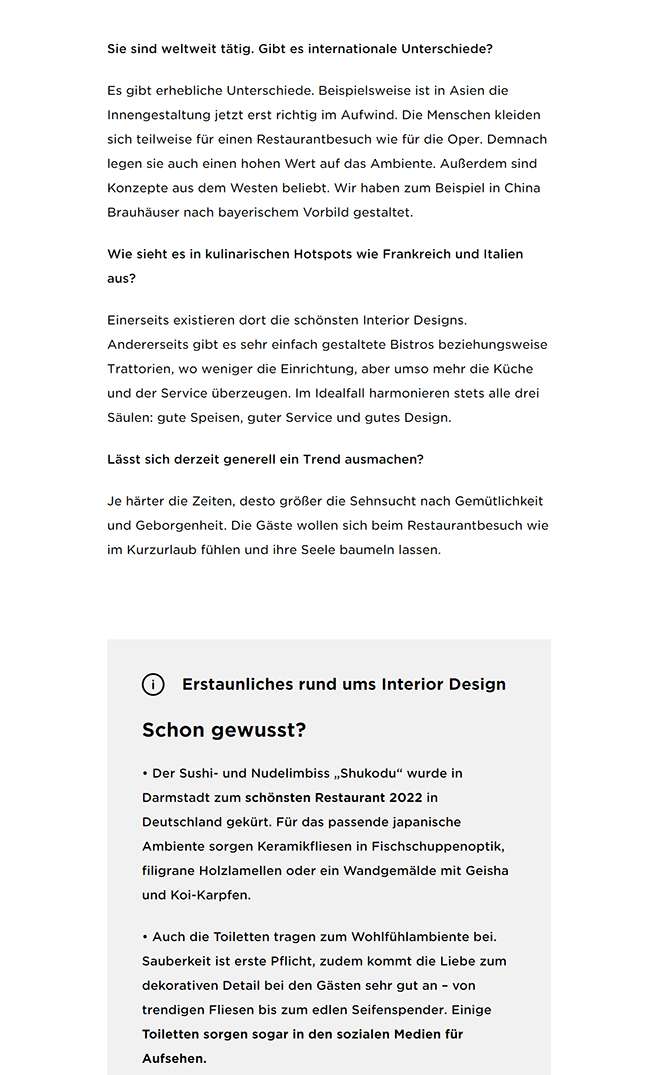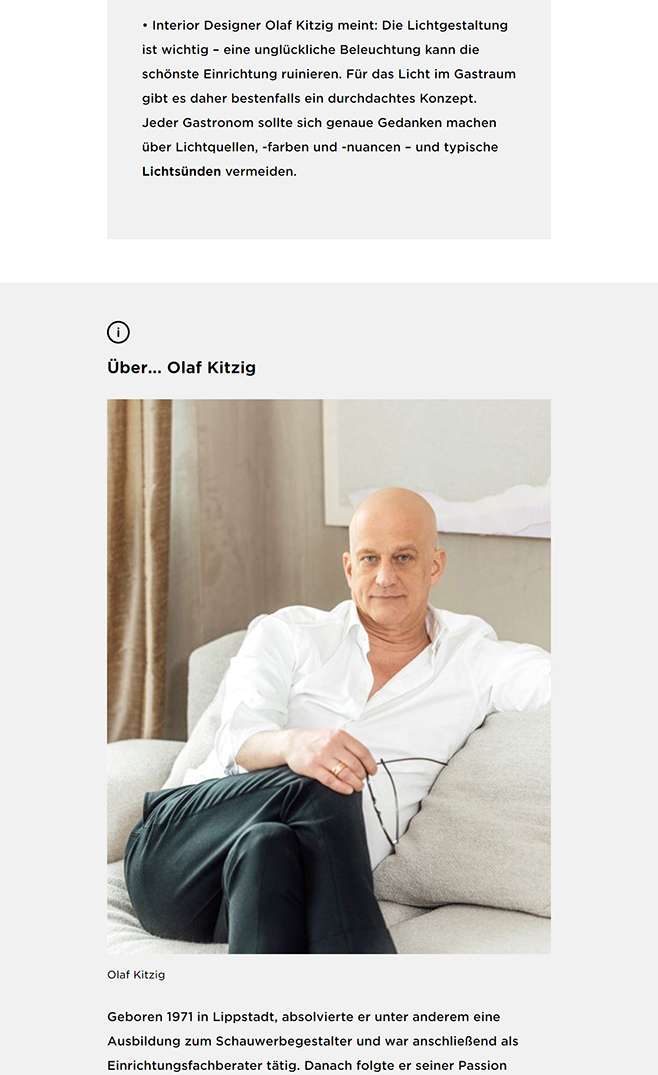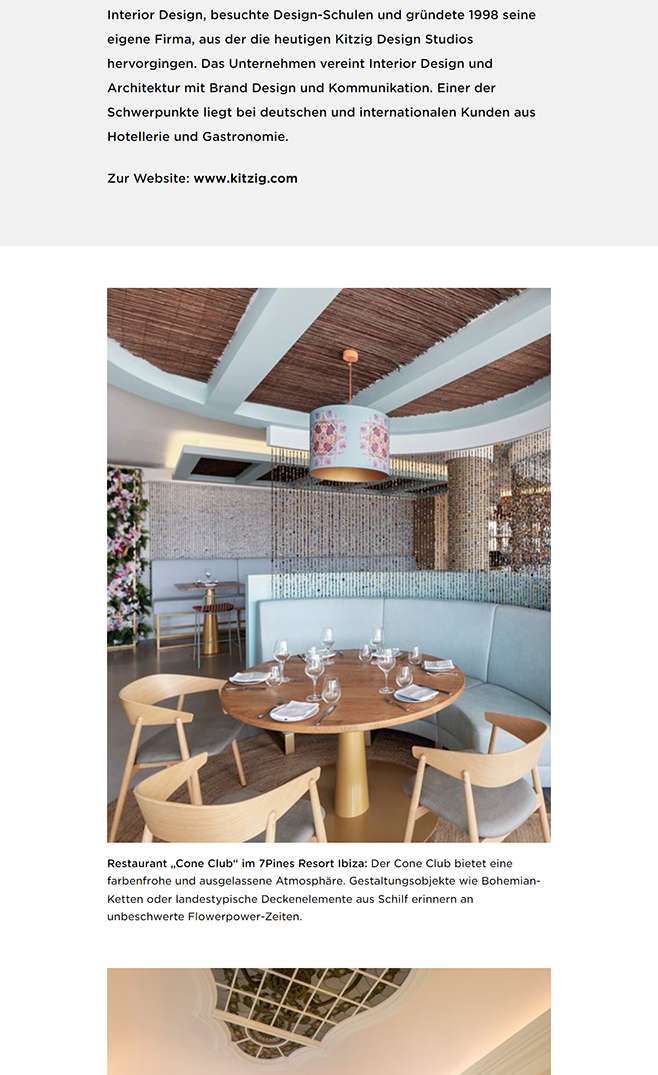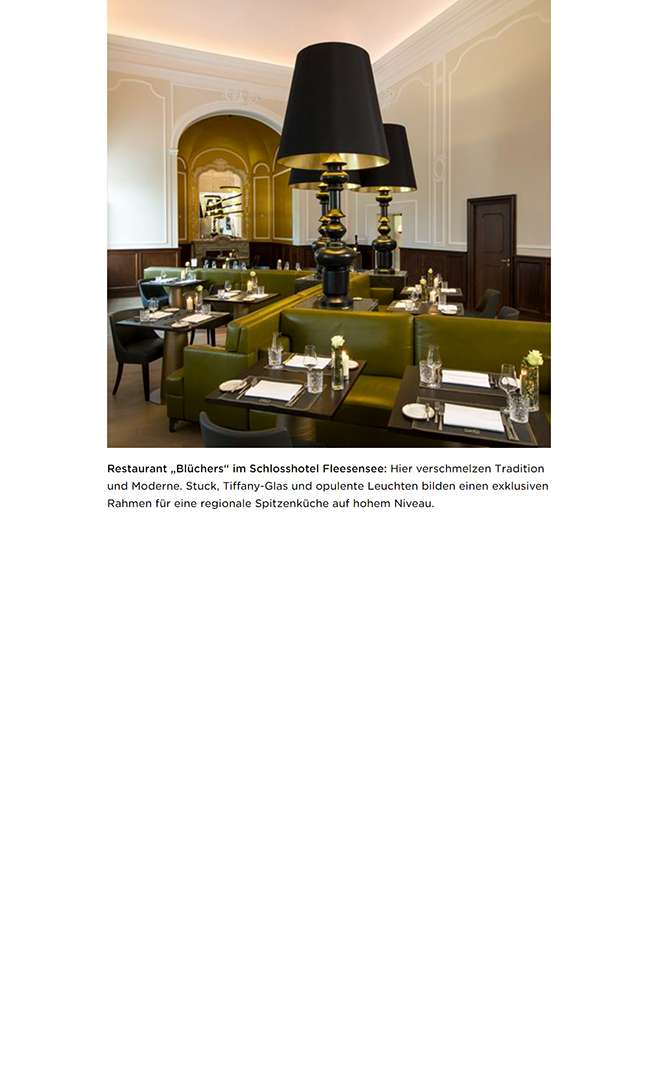Should everyone think about design, even people running small snack bars?
Absolutely. Even the pizza place down the road needs to be designed in a way that shows that the restaurateur has thought about how it is fitted out and about the choice of colours, shapes and materials. Guests will pay for things that are designed and decorated with love and attention to detail.
Are there any basic principles which apply to design?
Yes, the interior design should reflect the passion of the owner, the cook and the service team. It is also important that it is authentic. The interior design must match the concept. In other words, a vegan restaurant shouldn’t use leather chairs.
Can little touches help too?
Definitely. You don’t always have to renovate or rebuild something from scratch. For example, depending on the season, even just some small changes can add a summery or wintery vibe, like changing the decorative cushions, the wall colour or the wallpaper or adjusting the light to make it lighter or darker. Things like that can create a different atmosphere straight away. In addition, carefully arranged vases or decorated cupboards behind the bar, for example with bottles or relevant objects and products, can breathe life and personality into the space.
And what should be avoided at all costs?
In my opinion, nothing is absolutely out of bounds. Anything is possible if you think it through carefully and if it matches the restaurant’s concept. For example, designing everything in just one colour can work in a cool bar.
You work all over the world. Are there any international differences?
There are some big differences. For example, in Asia, interior design is only starting to take off now. Some people get dressed up like they’re going to the opera when they head to a restaurant. That means they really value the ambience too. Western concepts are also popular. For example, we have designed Bavarian-style breweries in China.
What about culinary hotspots like France and Italy?
On the one hand, they have always had the most beautiful interior designs. On the other hand, they have some very simply-designed bistros/trattorias which are much less about the space and much more about the cuisine and the service. Ideally, all three pillars would always be in harmony: good food, good service and good design.
Is it possible to identify any trends at the moment?
The harder the times, the more people crave feeling cosy and secure. Guests want to feel like they are taking a mini break and leaving their troubles behind when they step into a restaurant.
About…Olaf Kitzig
Born in 1971 in Lippstadt, Germany, he qualified as a show decorator and subsequently worked as a furnishing consultant. He then followed his passion for interior design, attended design schools and founded his own company in 1998, which has since become Kitzig Design Studios. The company brings interior design and architecture into harmony with brand design and communication. One of its areas of strength is in serving German and international customers from the hotel and hospitality industries.


